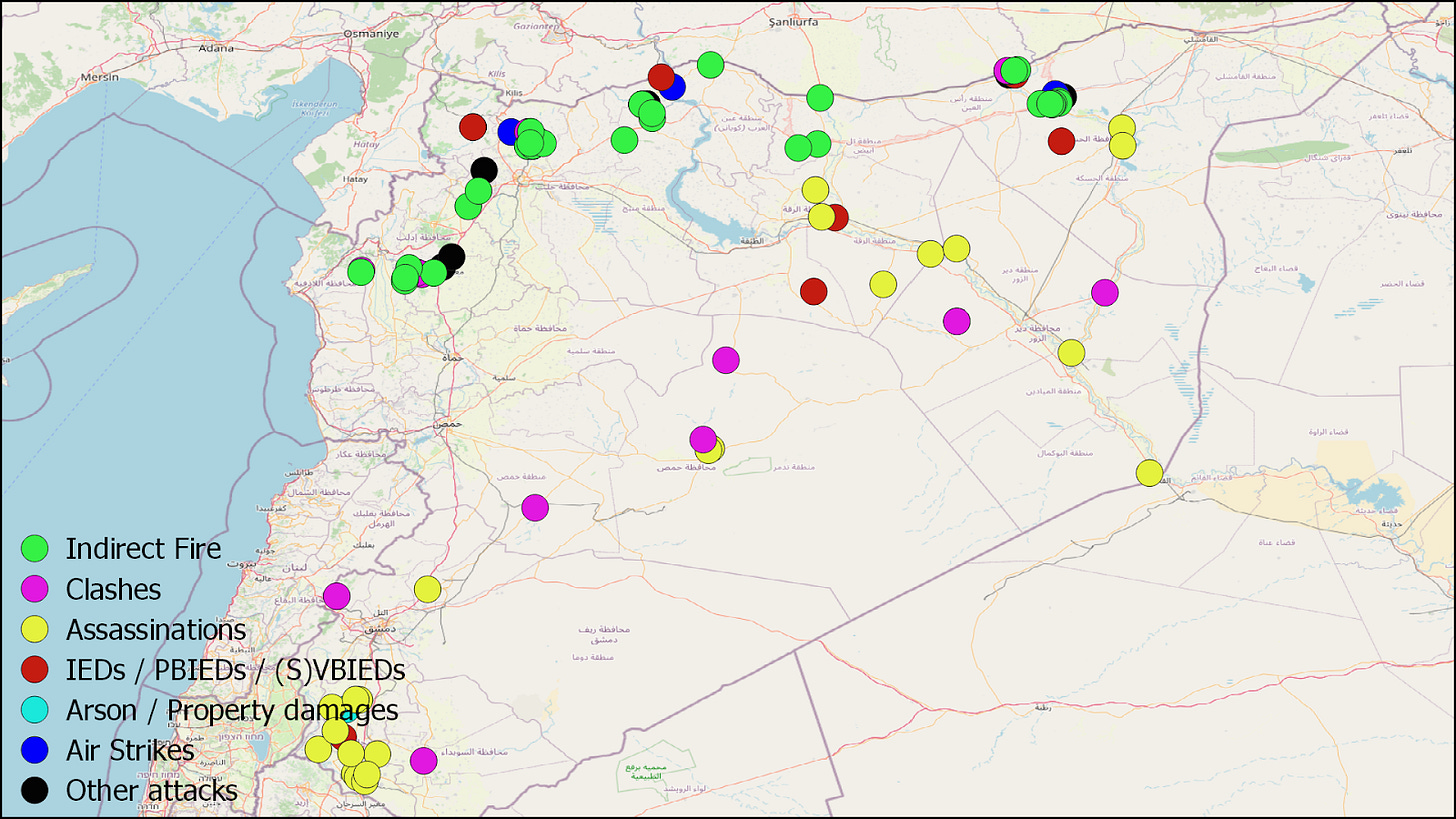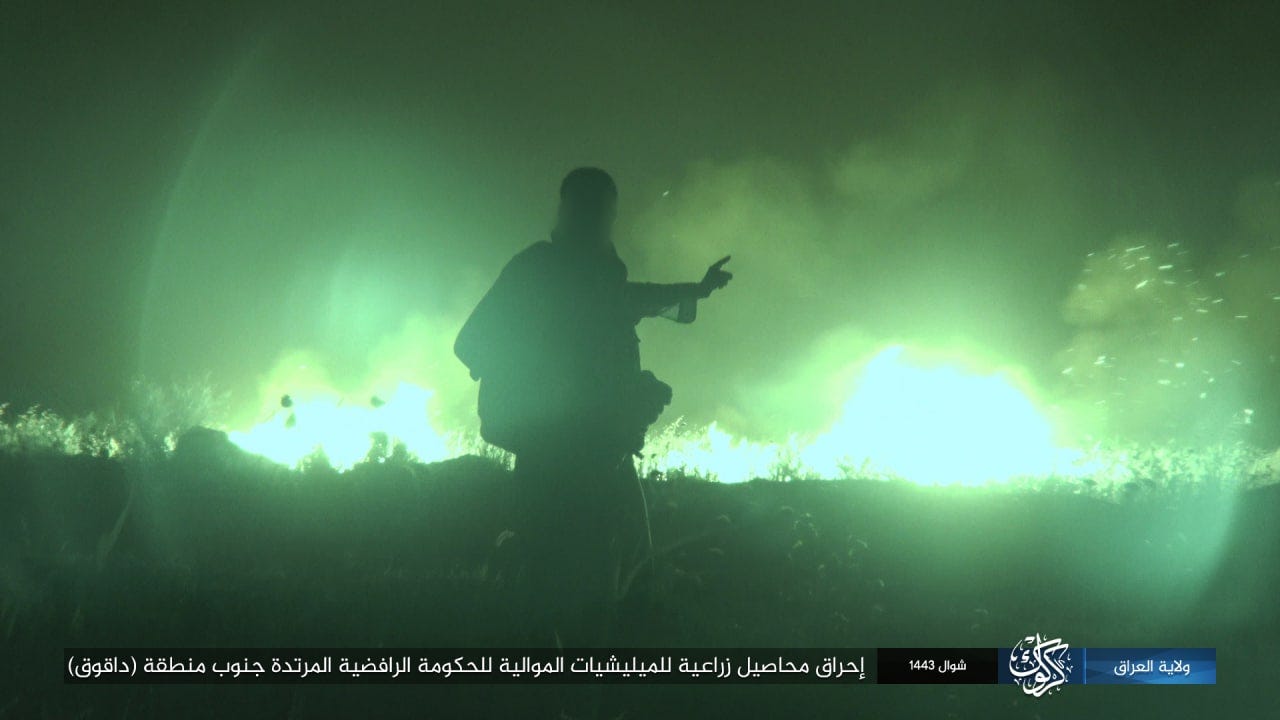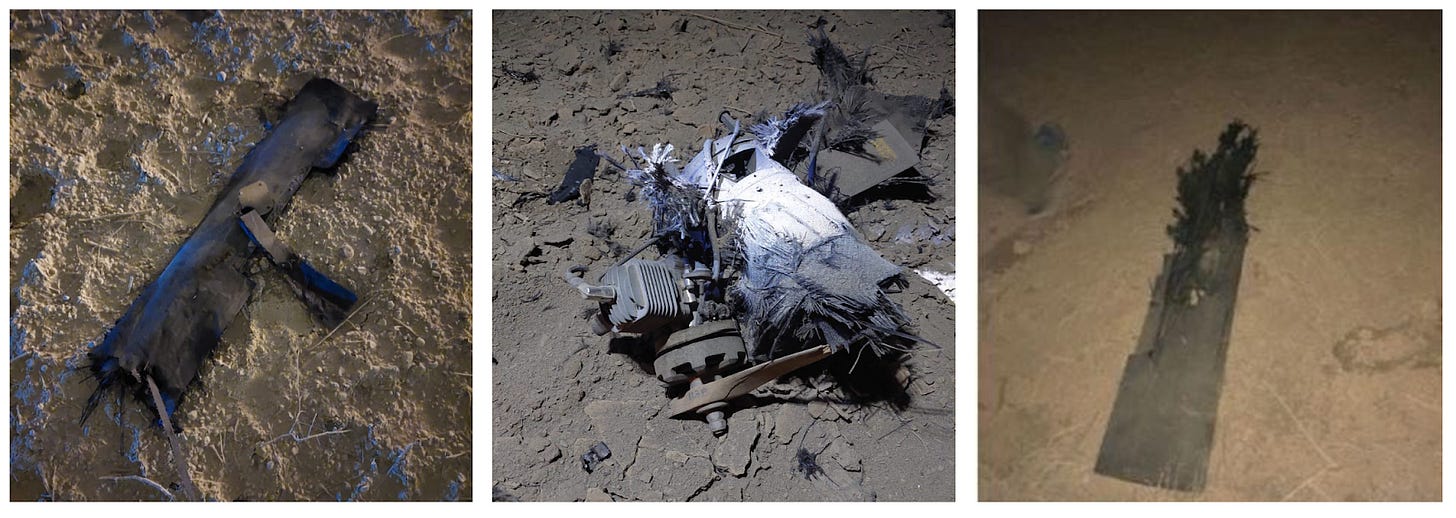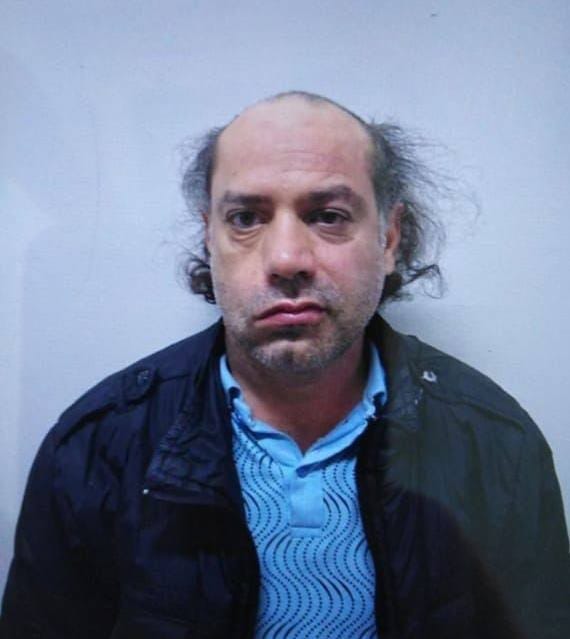Analytism newsletter #3
Weekly newsletter which covers the security and political situation in the Middle-East with a focus on Syria, Iraq and neighbouring countries.
This newsletter will cover events concerning the security and political situations in the Middle-East with a focus on Syria, Iraq and neighbouring countries. This is the third edition which will cover 23rd and the 29th of May 2022. The following maps feature approximate locations for some incidents, as they could not be pinpointed exactly.
Syria
On Monday the President of Turkey, Recep Tayyip Erdoğan, announced the plan for another military operation in northern Syria which was claimed to start on Thursday (it did not). The operation is planned to capture a strip of land with a depth of 30 kilometres, from the southern Turkish border. This operations would continue the operation “Peace Spring” from October-November 2019, during which the the Syrian National Army (SNA; formerly FSA) aided by Turkey, captured large areas in the al-Raqqa and al-Hasakah governorates. The group holding the territory which Turkey aims to capture are the Syrian Democratic Forces (SDF), which is a coalition of several Kurdish, Assyrian and Free Syrian Army (FSA) groups. The coalition is led by the YPG (Kurdish Self-Defence Forces) and the YPJ (Women Self-Defence Forces), which are both linked to the Kurdistan Workers Party (PKK). The operation could include areas like the northeast of the al-Hasakah Governorate, but that is unlikely as the US has stationed troops in that area and they use that area for logistics. The two more likely areas are the northeastern Aleppo countryside around the city of Ain al-Arab (Kobanê) and Manbij; and/or the Tel Rifat area which is located in the Aleppo countryside north of Aleppo City. The former area houses the city of Ain al-Arab (Kobanê) which is the largest city in that area on the side of the Syrian border and Manbij city which is the second largest city in the Aleppo governorate. The latter area, Tel Rifat is a relatively small city north of Aleppo city. Tal Rifat is suspected to be the main base of the Afrin Liberation Forces (HRE), which are fighting an insurgency in SNA controlled territory in Aleppo and mainly in the Afrin district. The HRE is thought to be part of the SDF, specifically the YPG and/or YPJ. The main force which would carry out such an operation is the SNA, which is made up of many smaller or larger forces like Faylaq al-Sham, Ahrar al-Sharqiya or the Hamza Division. On Wednesday Ahrar al-Sharqiya, Jaysh al-Sharqiya, the 20th Division and Ahrar al-Sham (Aleppo section) of the SNA mobilised their forces. This may be related to the reported Turkish-led operations, or to a number of clashes in the days prior between the SNA and drug-dealers in Marea, and between two Clans (al-Akidat and al-Mawali) in Ras al-Ayn (Serêkaniyê). HTS didn’t see this mobilisation favourably and reportedly started a local media campaign criticising it. It is probable that the announcement of the operation came too early, and it will only start in the coming weeks or later. Turkey usually focuses on one operation at once, and Turkish forces are currently in the midst of an operation by the name of “Claw-Lock” in the Kurdistan Regional Government area in northern Iraq. But Turkey has been preparing for another operation and stated on Friday that they were 90 percent complete with the preparations for two operations one in Syria and one in Iraq. This would demonstrate a change in Turkish military policy. The SDF appears to take the threat of another Turkish invasion seriously, as indicated by them reportedly cancelling leave of their fighters until further notice.
There were a variety of clashes, assassinations and IED attacks in the al-Hasakah, Deir ez-Zor, al-Raqqah, Homs, Rif Dimashq and Daraa governorates. It is likely that the majority were carried out by Islamic State (IS) cells. They targeted SDF fighters in Hasakah, pro-Syrian Government forces (Syrian Arab Army, Liwa Fatemiyoun and Syrian Government aligned militias) in al-Raqqah, Deir ez-Zor, Homs, Rif Dimashq and Daraa. In Daraa the head of the municipal council in the town of Sahem al-Golan, some recollied opposition fighters and several civilians were assassinated. The assassinations in Daraa could have been carried out by IS aligned cells or opposition cells, but the former is more likely. The attacks are aimed to sustain pressure on the security forces and to disrupt local governance (i.e. killing the head of a municipal council). In addition to the attacks above, there also has been an arson attack, targeting a wheat field in Daraa. This was almost certainly carried out by IS aligned cells, and is meant to create economic issues. It is especially harmful at the moment due to wheat shortages, the situation will be covered later.
On Tuesday the General Security Service (GSS) of the Syrian Salvation Government (SSG, HTS backed) arrested the deputy emir (leader) of Ansar al-Islam (Partisans of Islam) “Abu al-Darda al-Kurdi” in Harim (northern Idlib governorate). It was reported that he visited Osama Bin Laden in the mid-2000s in Afghanistan. A man with a similar name (Abu Darda) was one of the Arab volunteers fighting in Afghanistan against the Soviets in the 1980s, the person also was a founding member of a precousor group of Ansar al-Islam by the name of “Jund al-Islam” (Soldiers of Islam). His Kunya (nom de guerre) consists of two parts, the first either indicates that he has a son by the name of “al-Darda” or (more likely) he took the name from a companion of the Prophet Mohammed by the same name. The latter is common among Jihadists, to take the names of companions of the Prophet Mohammed or major Jihadists figures. The last part of his Kunya indicates that he is of Kurdish descent, which makes sense considering the group he is a part of. Ansar al-Islam was orignally based in 2001 in Iraqi Kurdistan (in the area of the Kurdistan Regional Government), but they expanded during the Iraq Insurgency and later into Syria as well when the conflict broke out. Today a small group (couple hundred at most) of Ansar al-Islam fighters still exist in both the Idlib and Latakia governorate. In the last years (2020-2022) Hayat Tahrir al-Sham (HTS) and the Syrian Salvation Government (SSG, HTS backed) cracked down on a variety of smaller Jihadists groups present in Idlib, Latakia and Hama Governorate and which are not part of HTS such as Jund al-Sham and Jundallah.
On Saturday SNA’s Third Legion captured a high-level IS commander by the name of Abu Turab al-Sabawi in the al-Bab area (Aleppo Governorate), who was responsible for IS Amniyat (their Intelligence Service equivalent) in northern Syria. This arrest and the arrest of another high ranking IS member (either delegate committee members of IS caliph) in Turkey suggest a serious security issue within IS. The former leader of IS Abu Ibrahim al-Hashimi al-Qurashi was also killed in northern Syria, in the Idlib governorate. If both IS members can be exploited as sources of information by both local and international intelligence services, it would mean that a significant amount of both IS leadership and the Syrian Wilayah leaders can be effectively pursued. IS leadership usually communicates by messengers, which due to the arrests are probably already known to local CT, but both captured IS members may also have at least general knowledge where the other leadership figures are hiding. The two factors; tracking the messengers and knowing the general location where IS leaders are hiding, have been used effectively in the past to capture and kill IS high value targets (HVTs).
On Tuesday it was announced that the eastern (Aleppo) section of Harakat Ahrar al-Sham al-Islaminyah (Ahrar al-Sham for short) had joined the SNA, but they rejoined Ahrar al-Sham again on Sunday.
The fronts in greater Idlib (parts of Latakia, parts of Idlib and parts of Aleppo governorates) were relatively cool this week. HTS targeted pro-Government forces with heavy-machine guns, snipers and rockets, and pro-Government forces launched one raid in Latakia (Jabal al-Akrad area), shelled opposition controlled areas and a sniper killed a civilian farmer. The fighting has cooled down in the last years, it’s mostly trading of indirect-fire (artillery, mortar, rockets) and occasional raids by both sides.
The SDF with assistance from the Global Coalition against IS is continuing counter-terrorism (CT) operations in the areas they control. On Tuesday the SDF arrested two IS members south of Raqqa, both are from Palmyra (Homs Governorate). On the same day the body of an Iraqi IS member was found near the village of al-Kassar (Deir ez-Zor), who was apparently killed by IS due to misbehaviour. On Wednesday the SDF arrested two members of IS in the al-Hasakah countryside; they provided logistical support by moving explosives to al-Hasakah and Deir ez-Zor. Continuing on Thursday, the SDF arrested a local IS cell leader in Deir ez-Zor governorate (see figure 1.1). Most IS attacks in SDF controlled territory are against SDF intelligence personnel, to degrade local intelligence capabilities which allow the SDF to arrest IS members and cells and to disrupt their general operations.
The Syrian Army’s 4th Division, 25th Division and the Air Force Intelligence “Tiger Force” launched combing operations in the Syrian badia (desert). The 4th and 25th Division around Palmyra (Tadmur, central Homs desert) and the “Tiger Force” in the Jabal Bashri area (southwestern Deir ez-Zor desert). In another incident a Colonel (some media wrongly reported him as an Brigadier General) by the name was killed in the Syrian badia, it is notable that such a high ranking officer is killed. In addition some media also reported casualties among the units performing combing operations in the Badia, which include at least one first lieutenant and four soldiers.
On Saturday clashes broke out between locals and Syrian Government forces in as-Suwayda city in the al-Maqous neighbourhood, after government forces raided a swimming pool and arrested four people. Weapons used ranged from small arms to heavy machine guns to shoulder-fired rockets. The fighting resulted in at least two deaths and five injured. The situation in as-Suwayda governorate is fragile, there have been a number of clashes between locals and government forces in the last years. Sporadic fighting may have continued until Sunday evening.
As noted above the problems with the continued supply of wheat are increasing, in Syria and the Middle-East in general. The main area in Syria where crops are grown is SDF controlled northeastern Syria, who need most of the wheat grown in their area for their own population. Contributing factors to the current issues are climate change and continued burning of wheat fields by IS, which has been a policy for several years. Syria and other Middle-Eastern in general countries usually procure extra wheat from Ukraine and/or Russia. But due to the war between the two countries, exports are limited. Russia is blocking Ukrainian ports and is enforcing a naval blockade, Ukrainian wheat has been exported (1.800 tons via a Czech company and a German port to Egypt [Source]) but the blockade, the current international supply-chain and logistics problems make it unlikely that enough can be exported. For Russia it has been problematic to export the wheat due to international sanctions. The prices of wheat also have significantly increased in the last few years (SDF areas; 2021 1kg = 0.36 USD, 2022 1kg = 0.55 USD), (Government areas; 2021 1kg = 0.36~ USD, 2022 1kg = 0.68-0.80~ USD) and (Opposition areas, flour (not wheat) prices; 2021 1kg = 3,15-3,25 USD, 2022 1kg = 5,30-5,40).
Iraq
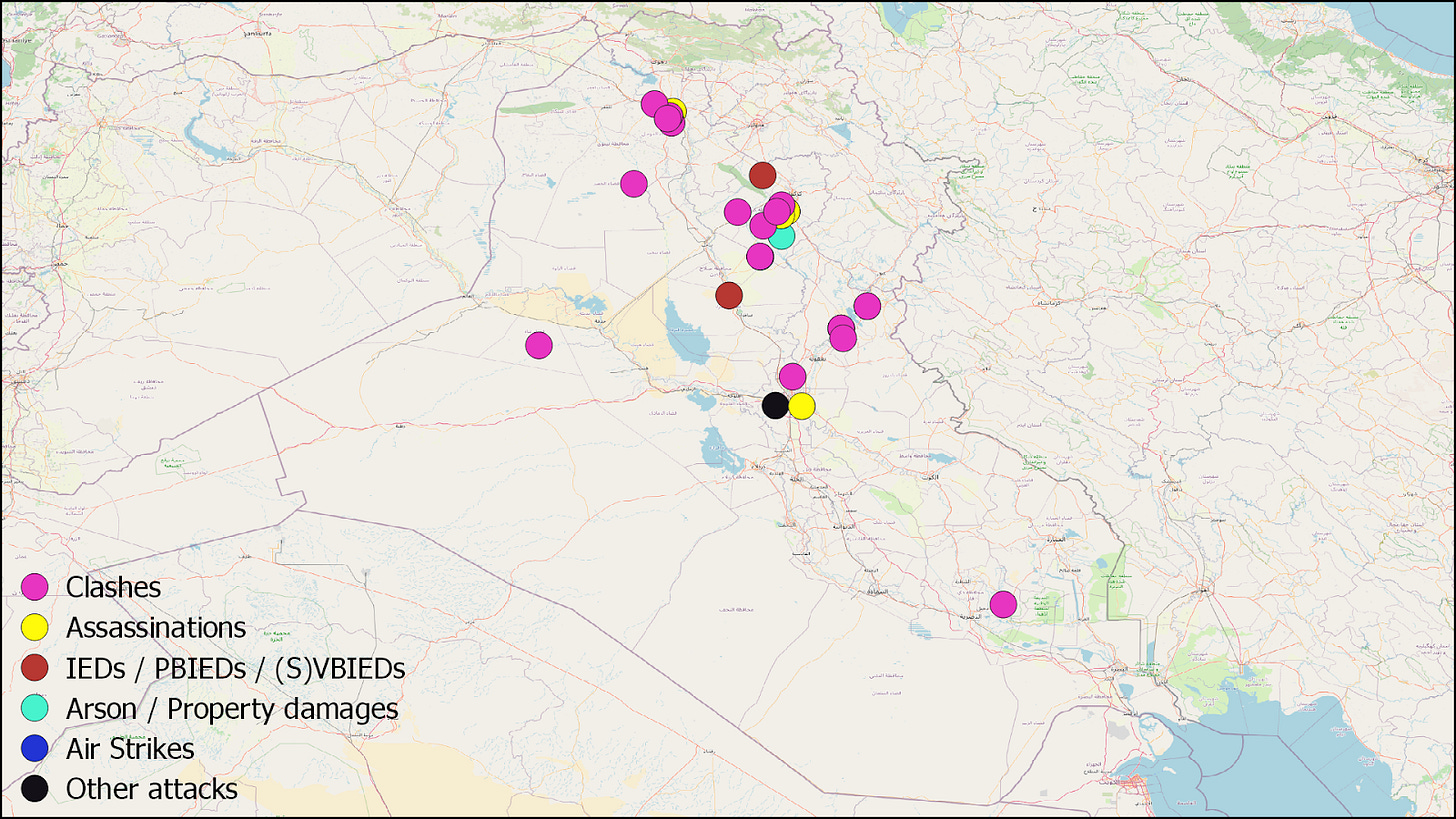
IS continues their insurgency in Iraq, the majority of attacks were carried out in the north of the country which features a majority sunni population (opposed to the southern regions which feature a majority Shia population). Most attacks, besides three, were likely carried out by IS in the governorates of Nineveh, Kirkuk, Salah al-Din, Diyala and Baghdad. The attacks have targeted civilians, tribal forces, Popular Mobilisation Forces (PMF, Hashd al-Shaabi) and the Iraqi army. Most of the targeted civilians were farmers, one attack killed six and another one two both in the Kirkuk governorate. As highlighted above, targeting agriculture and other economic targets is an old IS policy. IS is likely utilising the current series of dust storms, which makes it difficult to employ ISR capabilities such as UAVs and it further complicates pursuing IS cells. Their main method of attack are small arms attacks by small groups of light infantry type. One attack stands out, on Monday the body of a 30-year old man was found in Baghdad near a Shia shrine. The man's hands were tied behind his back and it appears that he was executed by small arms (probably a suppressed pistol). Both the location and method are strong indicators that IS carried out this attack, although the occupation of the man is not known it is probable that he worked in Government, the Security forces or in the local Shia religious community. The total fatalities are about half a dozen Iraqi Security Forces (ISF), a dozen civilians and about a dozen IS fighters.
ISF continued their CT operations and captured several fighters and cells in northern Iraq. The arrests reportedly total to a couple dozen fighters. An old problem with the CT operations in the border area of Iraq and the KRG is the cooperation between ISF and KRG Peshmerga. There have been many announcements of the years but there appears to be no significant cooperation between the two. This provides IS a breathing space in the mountainous border areas.
One assassination which was not carried out by IS, but was reported to have been the Turkish MIT (National Intelligence Organisation). On Monday a leader of the PKK, who was responsible for the Kirkuk, Hamour and Sulaymaniyah areas, was killed in Mosul. This attack occurred within the context of the lastest Turkish offensive (called “Claw-Lock”) into the KRG areas of northern Iraq.
In addition there has been a drone attack on the “Victory Base” also known as the Martyr Mohammad Alaa Air Base which is attached to the Baghdad International Airport. The base is used by the US-led international coalition. On Tuesday, an unmanned aerial vehicle (UAV) targeted the base but was reported to be intercepted by an air defence system. The UAV appears to have exploded at some point, suggesting that a machine-cannon or missile was used to shoot down the UAV. It was not possible to positively identify the UAV, but it is unlikely to be a commercial system. It is probable that one of the many Iranian-backed armed groups in Iraq used an Iranian supplied UAV to target US forces stationed at the base. There also was another attack on a US logistics convoy in Salah al-Din governorate using an IED, which was likely also perpetrated by an Iranian-backed group.
The Iraqi Prime Minister agreed on Monday that PMF fighters could attend courses at the Iraqi military colleges. The PMF run their own training camps and some PMF fighters are reportedly trained in Iran and Lebanon to use sophisticated weapon systems like UAVs. On Tuesday the Ministry of Interior decided that their civilian employees have to hand over their personnel weapons, which appear to be meant to be distributed to other ISF. The Iraqi Government has also announced plans to establish compulsory conscription, to fight against “drugs” and is working on new intelligence and national security security laws.
KRG

This week there have been sustained clashes, shelling and air strikes in the northwest of the Kurdistan Regional Government (KRG) between the PKK and Turkish Armed Forces (TAF). The fighting is concentrated in the mountains in the Amadiya (Amêdî) district of the Dohuk governorate. The fighting is due to the new Turkish operation “Claw-Lock” which started late last-month (April). Turkey has started several operations into the KRG with the aim to push back the PKK further into the KRG and to degrade their capabilities and manpower. Assessing the situation is difficult due to the limited media and propaganda both the PKK and TAF put out, but it can be assessed that there has been continued fighting in which both sides sustained fatalities. It is probable that the PKK lost about a dozen fighters and the TAF about half dozen soldiers. Additionally several civilians were killed by indirect fire and air-strikes by both sides and one Peshmerga fighter was wounded during a PKK attack.
On Monday several IS fighters attacked a village in southern Sulaymaniyah Governorate controlled by the KRG, near no-man's land between KRG and Iraqi Government controlled territory. One woman and three men were injured in the attack. As briefly explored above, due to the issues regarding cooperations between the Peshmerga and ISF, IS cells are able to hide in the mountainous area and avoid CT operations by the Peshmerga and ISF. On Thursday the Peshmerga Minister (KRG equivalent of a Defence Minister) announced that most tensions between the Peshmerga and the Iraqi Army have been solved. But there have been a number of similar statements but no subsequent cooperation, so it has to be seen if this may change something.
On Monday the so-called Iraqi Resistance Coordination Committee (pro-Iraninian groups) published a statement in which they warned Masrur Barzani who is the KRG’s Prime Minister. They claim that an armed group is training in the KRG under KRG supervision, they may mean the PKK but they stand in conflict with the KRG. They go on and say that the KRG should stop the training or they will carry out attacks. In early 2022 a group by the name of Ahrar Sinjar, which is made up of Yezidi fighters, claimed an attack against a TAF base in the KRG, since then there have been at least three more attacks. More attacks appear to have been planned but were disrupted by KRG security forces. It is thought that Ahrar Sinjar received training from pro-Iraniain PMF groups and may have received munitions from them.
Turkey
Turkish Security Forces (TSF) arrested two IS members this week. One IS member who planned an PBIED (Pedestrian/Person Borne Improvised Explosive Device) attack in Istanbul was arrested on Tuesday. On Thursday a person claiming to carry a bomb walked towards the police department in Gaziantep and was shot by police. It later turned out that he just carried a remote but no explosives. His motives are yet unclear.
Also on Thursday Turkey reported to have arrested the current IS leader Abu al-Hasan al-Hashimi al-Qurashi in Istanbul. His face matches a person by the name of Bashar Khattab Ghazal al-Sumaidai (also known as Hajji Zaid, Ustath Zaid, Abu Khattab al-Iraqi, Abu al-Moez al-Iraq and Abu Ishaq), who joined IS in 2013 and was/is a member of the IS delegated committee since 2016. The delegate committee is the highest administration council within IS, it is of equal importance as the shura council. It was reported that he may have left Syria for Turkey in 2017 during the fighting in Raqqa but may have returned to Syria in late 2020 or early 2021. I compared an image of the person arrested in Istanbul and a known image of Bashar Khattab Ghazal al-Sumaidai using software. The employed face verification software assessed that it is the same person in both pictures (see figure 4.2). He (Bashar Khattab Ghazal al-Sumaidai) is suffering from facial hemiplegia which worsened post 2013, he reportedly has problems breathing and speaking because of it. The latter may be the reason that he didn’t appear in IS media.
It was suspected and several Jihadists sources have reported that Bashar Khattab Ghazal al-Sumaidai was indeed elected as Caliph after Abu Ibrahim al-Hashimi al-Qurashi (also known as Abdullah Qardash, Hajji Abdullah and Amir Muhammad Sa’id al-Salbi al-Mawla) killed himself in February during a US SOF raid in the Syrian Idlib governorate. Even if he isn’t the leader of IS, he is still a high ranking member of IS and one of the highest ranking captured in the last years.
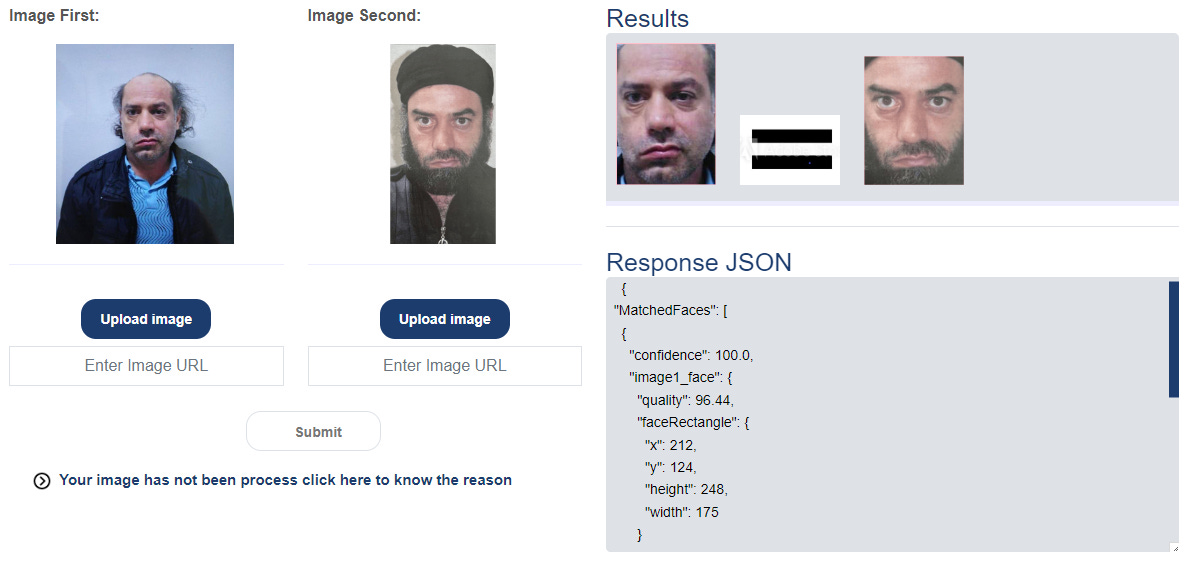
Iran
This week there have been a number of attacks in Iran, by both internal and external actors. On Tuesday a F7 jet crashed in Isfahan, killing the two pilots. It was reported that a technical defect was responsible for the crash, which is probable as the jets are old and Iran likely has problems sourcing spare parts. On Thursday the Iranian Ministry of Defence (MoD), reported that there was an explosion at the Parchin military complex, located southeast of Tehran, which led to the death of one person (engineer) and injured another. Media reported that the Parchin military complex was suspected by the International Atomic Energy Agency (IAEA) to be developing explosive triggers for nuclear weapons. Due to their suspected research they may have been targeted by the Israelis or Isreali backed forces. The site didn’t feature visible damage on satellite imagery from May 27th (Friday), which may indicate that this was an targeted assassination which would fit previous attacks which are suspected to have been carried out by Isreal. Reportedly a kamikaze drone was used to target the personnel working at the Parchin military complex.
On Saturday one person using small arms killed two to four people (some may have been Iranian Security Forces) and injured four police officers in Tehran.The person was arrested shortly afterwards, in an interview he said that he wanted to shoot people with whom he had a disagreement. On the same day a Iranian Police Officer was assassinated in the Sistan and Baluchistan province, several Baloch insurgent groups are active in the province who may have targeted the police officer.
Furthermore on Friday the Iranian Revolutionary Guard Corps (IRGC) seized two Greek oil tankers in the Persian gulf. The seizure of the two Greek tankers followed a seizure by Greece of one Iranian flagged but Russian operated oil tanker in Greece in April. One of the tankers seized by Iran was chartered by the US to transport the oil from the tanker seized in Greece.
Lebanon
On Wednesday the Lebanese army arrested several men in the Bekaa valley who were wanted for previously shooting at Lebanese Security Forces. On Thursday a Lebanese army sergeant was killed during a robbery in southern Beirut. The last weeks there have been a number of news reports of Hezbollah activities in the production and trade of drugs such as Captagon, Hezbollah reportedly just established a new facility in Syria’s Homs governorate. On Thursday Hezbollah issued a statement denying their involvement in both the production and trading of drugs.

